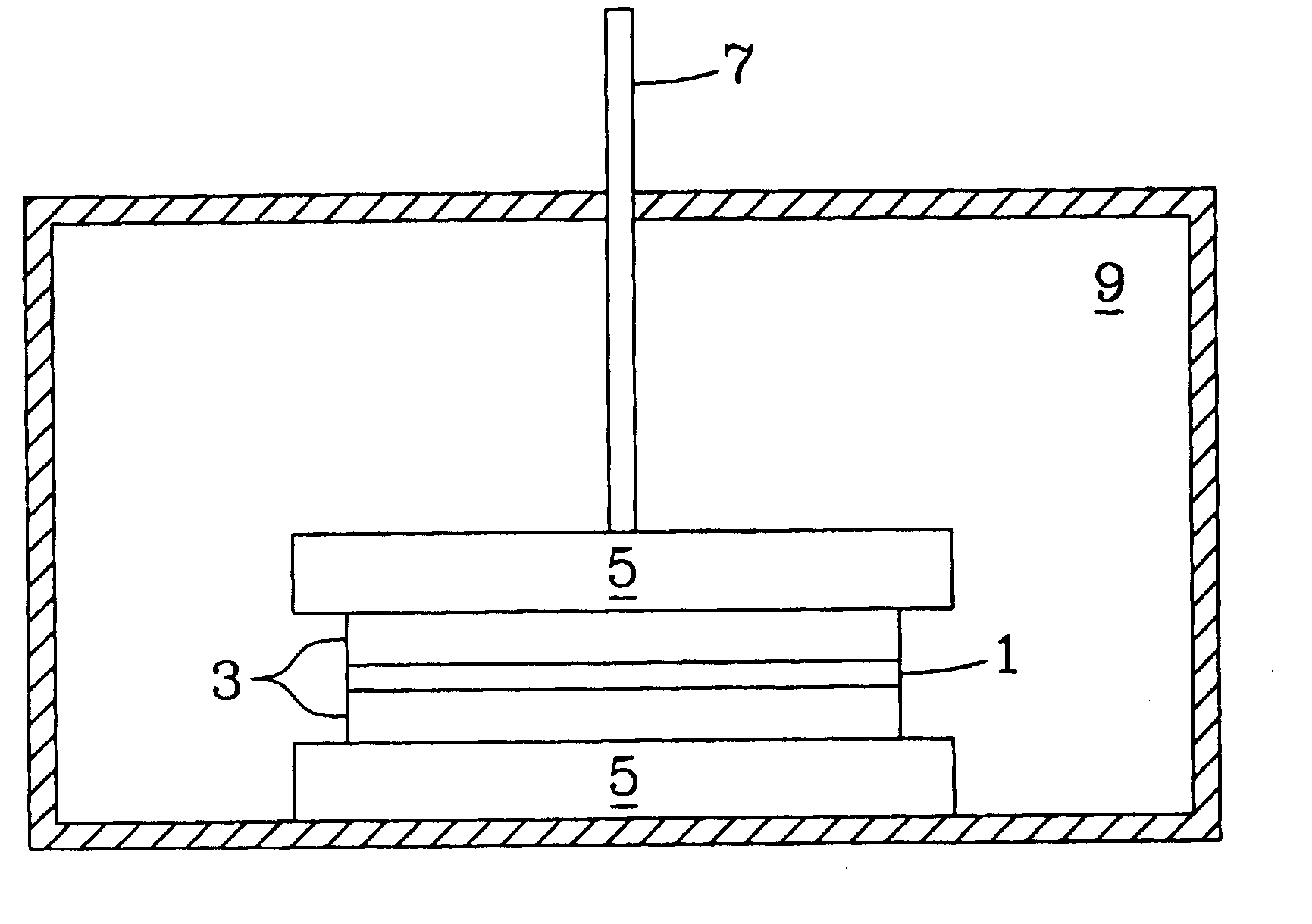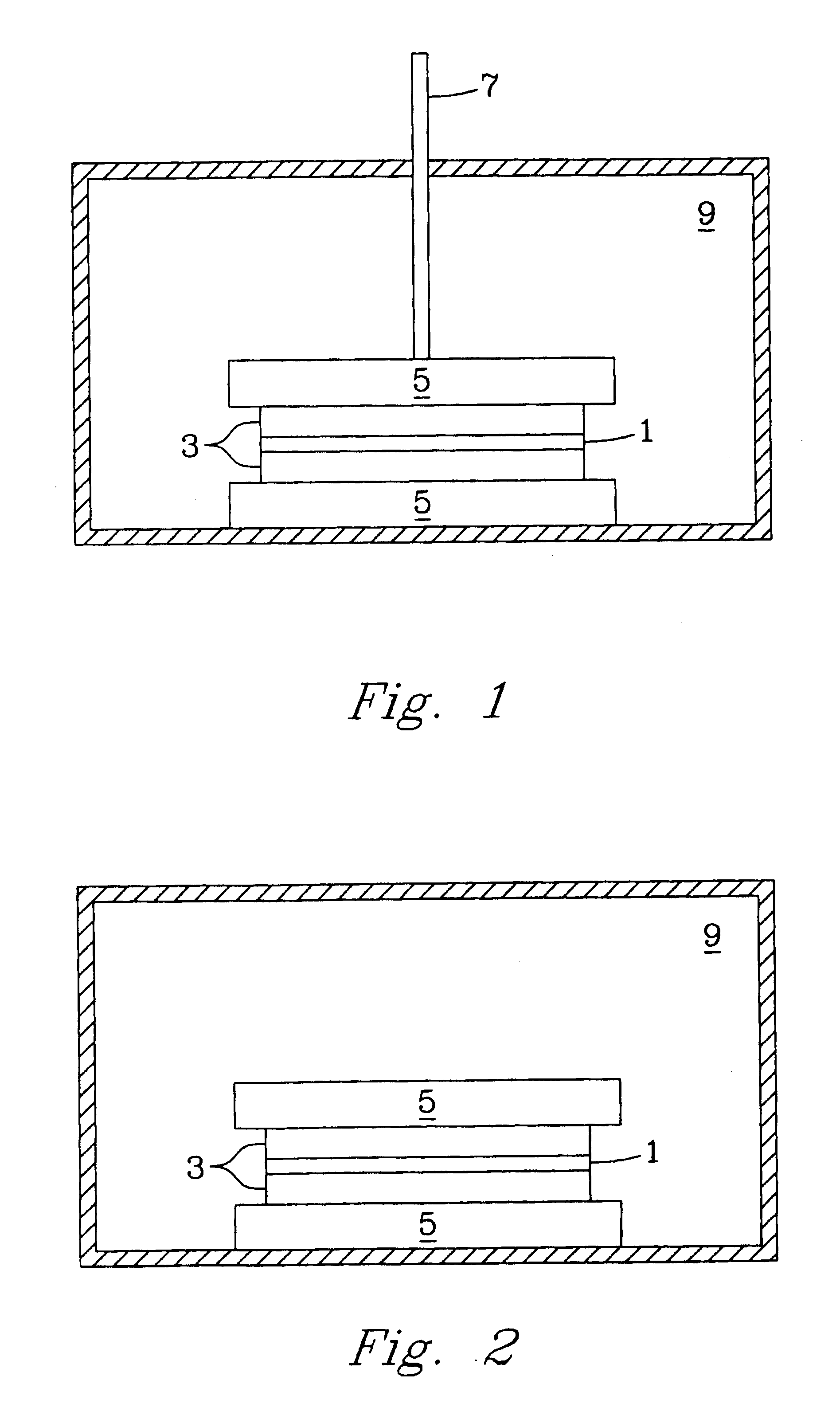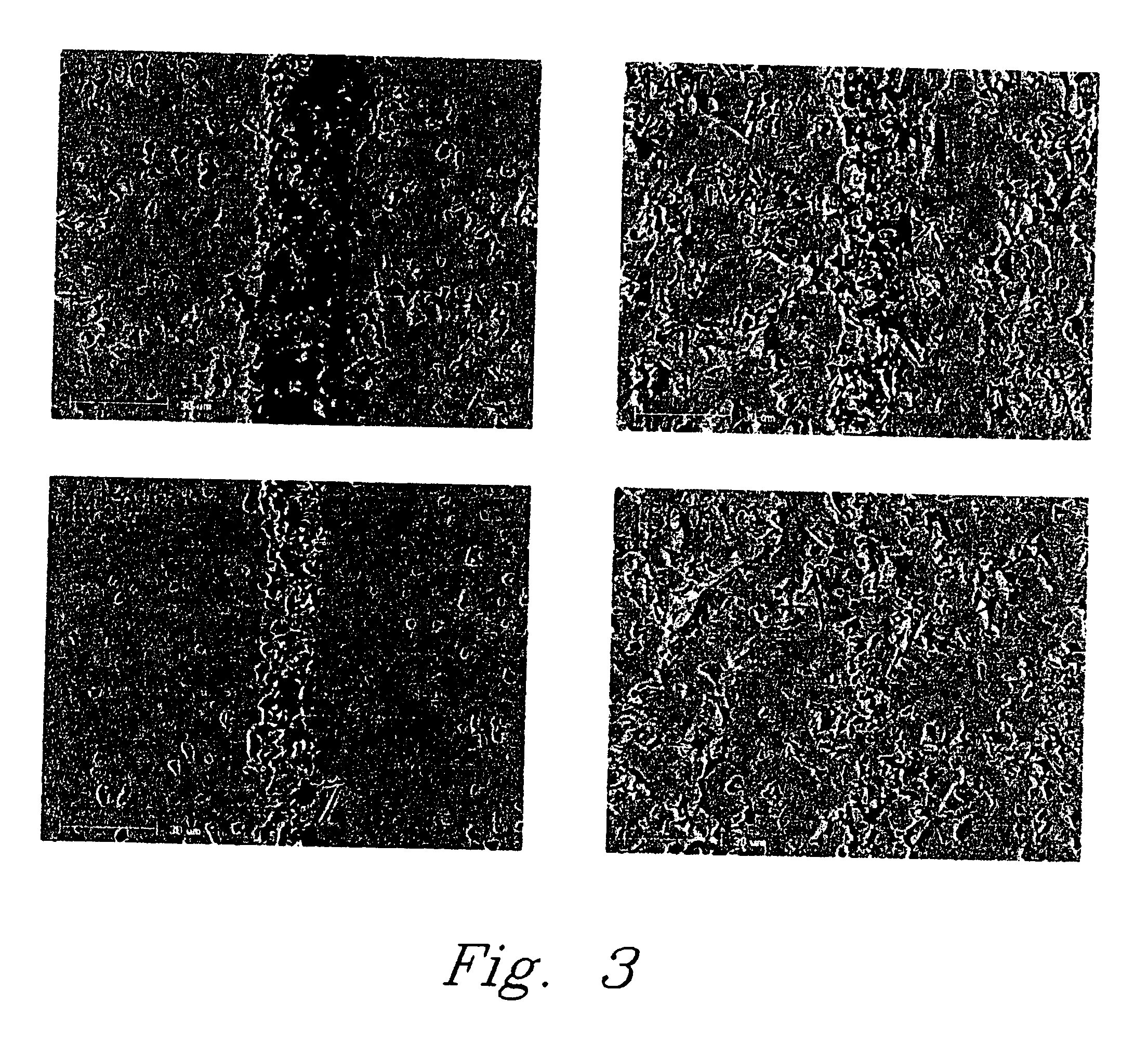Brazing techniques for dense high-fired alumina
- Summary
- Abstract
- Description
- Claims
- Application Information
AI Technical Summary
Benefits of technology
Problems solved by technology
Method used
Image
Examples
example 1
[0034] The pressure-assisted method included the application of pressure on testing samples during heat treatment after a layer of LiAl5O8 fine powder or paste was applied to the joint area. The LiAl5O8 paste was formed by mixing the fine powder of LiAl5O8 and a binder system, for example, Ferro B71757. LiAl5O8 powder is insoluble in water and does not react with the organic based binder system. After the applied paste was pre-dried in air for about 4 hours, the specimen was pressed using an alumina rod with a pressure of about 5 to about 40 psi. The sample was heated at 1° C. / min to 400° C. and held for 1 hour to burn out the binder, then heated at 3° C. / min to 1450° C.-1500° C. and held for 2 hours. The bonding strength is higher than 6000 psi as determined by the shear strength method test described herein.
example 2
[0035] In another example of the pressure-less method involved applying a thin layer of Li5AlO4 fine powder or paste evenly over the entire braze area of two dense alumina bars (1″×¼″×⅛″ each) and heating the substrates at 10° C. / min to 1200° C. and holding at the temperature for a period in the range of about 2-12 hours. At the 1200° C. temperature plateau, the Li5AlO4 powder melts and wets the surface of the fired alumina bars and starts to react to form other lithium aluminate compounds with higher Al / Li ratio to the precursor Li5AlO4 powder. The bonding strength of the sample was about 725 psi using a shear strength measurement. The brazed interface consists of mainly LiAlO2 phase with less than 20% of LiAl5O8 phase identified by X-ray diffraction (XRD) analysis.
example 3
[0036] In a further example of the pressure-less method also involved placing a thin layer of Li5AlO4 fine powder or paste in the braze area of two dense alumina parts and heating the substrates at 10° C. / min to 1400° C. and holding at that temperature for 12 hours. The high temperature refractory LiAl5O8 was dominantly formed at the brazed interface. The bonding strength of the test sample was less than 725 psi using a shear strength method test.
PUM
| Property | Measurement | Unit |
|---|---|---|
| Temperature | aaaaa | aaaaa |
| Pressure | aaaaa | aaaaa |
| Refractory | aaaaa | aaaaa |
Abstract
Description
Claims
Application Information
 Login to View More
Login to View More - R&D
- Intellectual Property
- Life Sciences
- Materials
- Tech Scout
- Unparalleled Data Quality
- Higher Quality Content
- 60% Fewer Hallucinations
Browse by: Latest US Patents, China's latest patents, Technical Efficacy Thesaurus, Application Domain, Technology Topic, Popular Technical Reports.
© 2025 PatSnap. All rights reserved.Legal|Privacy policy|Modern Slavery Act Transparency Statement|Sitemap|About US| Contact US: help@patsnap.com



